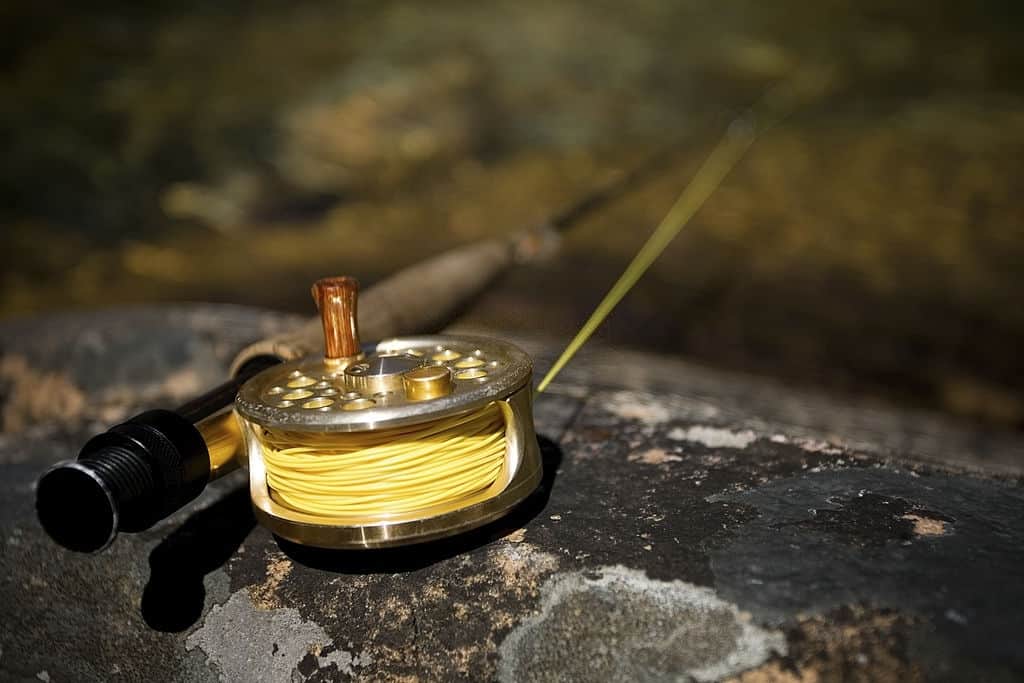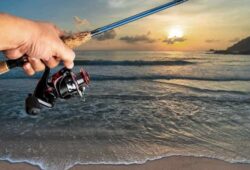I have a few angler friends who wonder – why use yellow fishing line?
Does the color really matter? Will it impact your success when fishing?
Surprisingly, it does affect how efficient you are able to catch fish. Your line, as well as other elements, affect your success in the waters. This is why it is important to know what works and what doesn’t to save yourself so much time, energy, and money.
So, if you are still at a loss with what fishing line you should use, keep reading to know what’s the most effective way to catch fish – quickly and easily!
Contents
Common Angler Question – Why Use Yellow Fishing Line?
Many anglers are curious if fishing line color really matters.
Does it need to be invisible to your target or not?
There are also those who claim that you need to see your line when in the water.
This is why I did some research to uncover the truth, which can help fellow anglers gain success in fishing.
Here are some of the different fishing line colors and what they actually do when in the water. Or at least, what happens when fish see (or don’t see) them.
1. Clear
A monofilament line that is clear is a generic option by most anglers.
When submerged in water, it is close to being invisible. Thus, novice and skilled anglers use this line and gain success from it.
Aside from the clear mono line, there is a fluorocarbon line that’s clear, as well.
For experts, fluorocarbon is even better than monofilament. Why?
Because it is even more undetected once in the water. As a result, they cannot be seen by the fish and will result in greater success when angling.
2. Yellow
Some lines are yellow while others are neon green. And as you can just imagine, it is highly visible.
So, why is it even worth using when fishing when your target can see it?
There is a special reason and important purpose for this line.
The bright color lets you see the fish and the line. If you are using your line in muddy water, you will want to use a line that’s visible. This way, it would be easier to determine if there are movements from your target.
3. Blue
Blue and green are pretty much alike.
What’s great about the blue line is that it works for water bodies with a slightly blue hue in it.
Clear blue monofilament is even better since this is invisible in the water. And the best part – the tint allows you to spot your line above the water.
4. Red
Contrary to what many people think, red is actually concealed when underwater.
However, there are some divers that say it appears black when in the water…
No matter what the truth may be, one thing is certain – red lines have a tendency to look quite like blood. This is why there are anglers who like to use this line color to increase the chances of bites as fish assume it is a creature that is bloody.
Read More: How to Attach a Bobber To a Fishing Line: Proper Steps to Follow
Other Factors to Consider Aside from Line Color
We all know the yellow fishing line is great for murky or unclear waters.
These lines come with a neon green color, which is often highly visible. It allows you to spot any movement on the line, which is particularly true with a bobber.
With its bright color, it is suitable for special use. This is not something that you need to use each time, especially when fishing in clear waters.
You can learn more about using a yellow fishing line and other colored lines in this video:
But aside from the line color, there are other things to keep in mind when choosing the right fishing line.
For instance, you need to think about the diameter.
The thickness or thinness of the line impacts the castability and stretch of the lure. When you use a line with a bigger diameter, this means it is much stronger.
However, if you use a thicker line, it will be very easy to see in the water. Thus, you need to really think about how thick the line should be. It must be the right diameter and is invisible enough yet strong, so as not to break when you are catching a heavier fish.
Then, you need to make sure the line is resistant to abrasion. Keep in mind that there are rough elements that can affect the strength of your lines such as debris, trees, and rocks. Choose a line that will not break easily just because it scratched up against a rock or other objects. This way, you will not end up losing your catch and the lures you use.
The material used for the line impacts strength. Monofilament is versatile, yet not exactly as strong as other types. Braided lines are very strong but not invisible in the water. So you need to think about these things when buying the right line to use.
Fluorocarbon is your best bet because it is stronger than monofilament. Additionally, it disappears in the water, unlike the braided line.
Lastly, consider the stiffness of the line. The stiffer it is, the more difficult it will be for you to cast. This is usually the case with thicker lines. The rule of thumb is to choose a line with the right amount of stiffness and flexibility for casting.
Final Thoughts
I hope you have now learned the answer to most anglers’ question on why use yellow fishing line in the water.
There are many line colors to choose from and different factors to think about when choosing the right line.
But the most important thing to consider is the condition of the water and how strong the line is in holding up well to the weight of your catch.
These will all impact your success in catching fish without breaking the bank.




